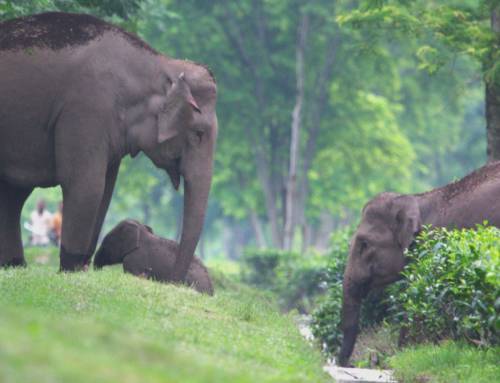Research Article: Karanth, K. U., Nichols, J. D., Kumar, N. S., & Hines, J. E. (2006). Assessing tiger population dynamics using photographic capture-recapture sampling. Ecology, 87(11), 2925-2937.
Blog Author: Aishwarya Anilkumar
Key highlights
- Researchers employed camera traps equipped with active infrared sensor mechanisms to capture images of tigers in Nagarahole Tiger Reserve, from a distance of 3.5 meters, ensuring simultaneous photography of both flanks for accurate identification.
- The study generated capture data for 74 individual tigers, providing estimates of demographic parameters challenging to obtain in elusive carnivore species.
- The research demonstrated that multi-year trend estimates for changes in tiger population size can be obtained with reasonable precision by addressing ecological and sampling uncertainties.
- The study highlighted the importance of modeling capture and temporary emigration probabilities to understand tiger population dynamics accurately.
- Collaborative efforts between research institutions and wildlife organizations are crucial for the conservation and protection of tiger populations worldwide.
Tigers, known for their elusive nature, roam vast territories and are stealthy, making them challenging to study in their habitats. Their solitary and territorial behavior adds to the mystery surrounding these majestic big cats, as they navigate large areas across landscapes. It is necessary to understand their population dynamics to aid their conservation, however, it is challenging to survey an entire area for tigers and it is extremely difficult to estimate all the individuals in the given area. These two form the key problems in understanding tiger population dynamics in a landscape.
Scientists from the Centre for Wildlife Studies (CWS), Wildlife Conservation Society (WCS), and the U.S. Geographical Survey (USGS) used various parameters such as initial and subsequent photographic capture probabilities of tigers using camera traps to analyze populations effectively. The research was conducted for nine years, in the Nagarahole Tiger Reserve, part of the Nilgiri Biosphere Reserve, in the Western Ghats of Karnataka, southern India.
The researchers employed camera traps equipped with active infrared sensors to capture images of tigers in Nagarahole, from a distance of 3.5 meters, ensuring simultaneous photography of both flanks for accurate identification of individual tigers. Strategic placement of camera traps based on tiger signs covering the entire study area comprehensively maximized capture probabilities. This allowed for detailed monitoring of tiger presence and behavior. The study generated capture history data for 74 individual tigers, providing estimates of demographic parameters challenging to obtain in elusive carnivore species.
This study of tiger population dynamics involved intricate modeling techniques to estimate survival rates of individuals and temporary emigration probabilities. By studying survival rates of different age classes and intervals between them, scientists were able to gain insights into these elusive species in their natural habitats. The research demonstrated that multi-year trends of changes in tiger population size can be obtained with reasonable precision by addressing ecological and sampling uncertainties. Tiger abundance in Nagarahole fluctuated annually, with wide variances in estimates due to uncertainties related to tiger ecology and sampling issues.
One key aspect of the research is the modeling of capture probabilities, which helped in understanding the likelihood of capturing tigers during different sampling periods. The study highlights the importance of conservation efforts for tiger populations worldwide by employing advanced modeling techniques and rigorous data analysis. This encourages the scientists to make informed decisions to protect these endangered species. Collaborative efforts between research institutions, wildlife organizations, and government agencies are crucial in ensuring the long-term survival of tigers and the forests they call home.
Note:
Emigration- The movement of organisms out of a particular area or population. It is the decrease in the population size due to individuals leaving the area to settle elsewhere.
You can access the original article here.
Keywords: Tiger, Large Carnivorous, Tiger Conservation, Wildlife Research, Population Dynamics




